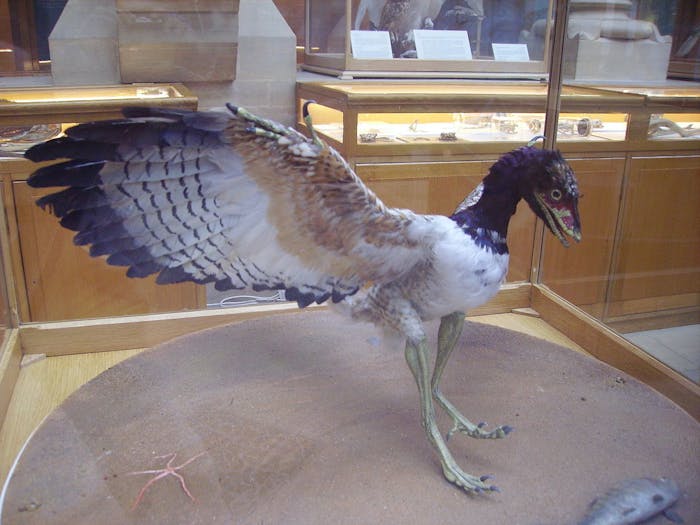Everyone knows that about 65 million years ago, a massive asteroid hit the Earth and wiped out all the dinosaurs. Except, well, not so much. Most species of dinosaurs went extinct in the aftermath of the impact, but some survived. Those survivors continued on, breeding and evolving over the epochs. Today, there are at least 10,000 species of dinosaur that roam the planet, and they come in a huge diversity of sizes, shapes, and colors. We call them — you guessed it — birds.
Birds aren’t like dinosaurs. They are dinosaurs. And the easiest way to get your head around this fact is to understand what being a dinosaur entails.
So, what makes a dinosaur a dinosaur, anyway?
Phylogenetic is a fancy word for how we classify animals based on genetic relationships between species. The goal of phylogenetics is to produce a phylogeny, a family tree of life. Scientists are finding that the most useful way to group organisms is by clade, which includes all descendants of a given common ancestor. The principles of phylogenetic analysis suggest this is the only correct way of classifying species.
Is this was the Tyrannosaurs rex really looked like?
The alternative is to group by class — that is, related organisms that display certain characteristics. The problem with this method is that an organism could get kicked out of a group if it evolves to no longer exhibit a distinguishing feature of its ancestors. This approach gets messy pretty quick — it would be like redrawing your whole family tree because you have blue eyes but none of your ancestors did.
So, back to dinosaurs: Dinosaurs are organisms that belong to the clade Dinosauria. Hundreds of millions of years ago, the first dinosaur was born from two not-quite-dinosaur parents. All of the descendants of this original dino are dinosaurs, no matter how varied or diverse. And birds, as it turns out, are among them.
So birds descended from pterodactyls, then?
Oh, heavens, no! Pterodactyls weren’t even dinosaurs. They were flying reptile cousins of the dinosaurs. They belong to the clade Pterosauria, which branched off from the phylogeny before that first dinosaur that we talked about earlier was born. Unlike the dinosaurs, the pterosaurs actually did go extinct during the great Cretaceous–Paleogene extinction event.
Land creatures have evolved to fly at many points in evolutionary history, and it doesn’t mean they come from the same branch. Bats, for example, are more closely related to humans than they are to birds.
A model of Archaeopteryx lithographica, on display at Oxford University Museum.
Birds evolved from bird-like dinosaurs like the Archaeopteryx. Its close cousins include the Tyrannosaurs rex and the velociraptors, which were a lot more bird-like than Jurassic Park led you to believe — they were very likely covered in feathers (or protofeathers) and warm-blooded (or somewhat warm-blooded).
Wait, are you trying to tell me that birds are reptiles?
Yes! Consider this: A crocodile is more closely related to a bird than to a lizard. So you want to create a group that includes crocodiles and lizards, but not birds. This might seem like a logical classification based on your understanding and perception of the world, but it is scientifically meaningless. You can call sharks and dolphins similar because they both swim in the ocean, but it’s simply wrong to therefore conclude that a dolphin is a fish.
So either a bird is a reptile, or the concept of “reptile” is an amorphous grouping of animals that share traits that we happen to find reptile-ish, regardless of their actual genetic relationship to each other.
Say it with me: All birds are dinosaurs, but not all dinosaurs are birds. All dinosaurs are reptiles, but not all reptiles are dinosaurs.



